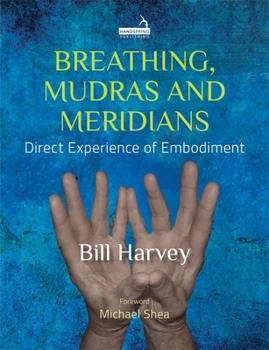Breathing, Mudras and Meridians: Direct Experience of Embodiment
The word "embodied" is one of those terms, such as "grounded" or "centered" that can be discussed forever without being experienced.
Defining embodiment, though, can be quite tricky, because much of what is taught in western societies about the body devalues the felt experience. The categories of formal learning, particularly anatomy and physiology, are taught with the fundamental source being cadavers (dead bodies), and conceptualizations that do not include our own vitality, or life force. Without the felt experience, embodiment is just another concept that can be discussed ad nauseum. The felt experience (or "phenomenology" in academic-speak) is the path away from these endless discussions and conceptual befuddlement. This book provides a basic training on how to become aware of our physiological functioning and our sense of vitality. A part of this training comes from becoming hyper-aware of how we breathe. This awareness makes it possible to feel our own organs and how they function and interrelate. To help us refine our awarenesses of our own organs we are entirely fortunate to learn and practice methods, developed over thousands of years by Indian and Chinese cultures.With these fundamentals this book leads us through a series of connected experiences using mudras to feel our organs, the flows of our life force (Qi) and the flow of that life force through our meridians. From that we learn to feel our own chakras and sushumna (central channel), and our ability to perceive our connections with our environment and ecosystem. This then provides the basis for a body sense of our spiritual existence and development. Thus the definition of embodiment evolves into deeper awareness within our bodies and deeper connection to the world.
Format:Paperback
Language:English
ISBN:1909141860
ISBN13:9781909141865
Release Date:June 2021
Publisher:Handspring Publishing
Length:208 Pages
Customer Reviews
0 rating





